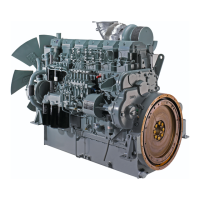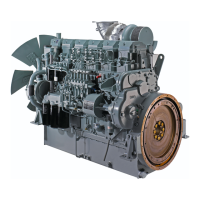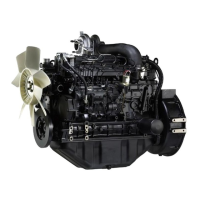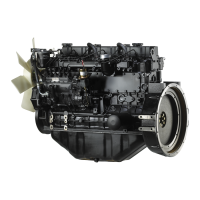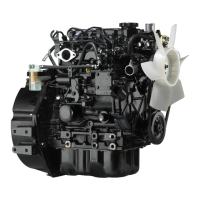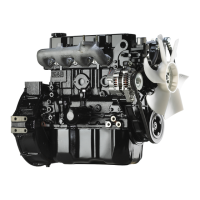3-13
Chapter 3 OPERATION
Starting
The starting method changes based on the application and specifications. Start the engine according to the speci-
fied procedure.
Warming-up operation
After the engine starts, operate the engine in a no load condition at low idling speed for 5 to 10 minutes to warm up
the engine.
Checking engine oil pressure
During warming-up operation, check if the oil pressure
is in the range of standard value.
Also, make sure the oil pressure gauge is operating
properly.
Note: The oil pressure gauge may indicate a higher
level than normal level immediately after the en-
gine starts, due to the low oil temperature. The
pressure gradually lowers to the normal level as
the oil temperature rises.
External inspection during
warm-up
Visually check the external view of the engine for
leaks of fuel, engine oil and coolant, or leaks of
exhaust gas from joints.
Before starting the engine, check to make sure no one is near the engine and that tools are not left on or near the
engine. In a loud voice, notify people in the area when starting the engine.
Do not apply a load to the engine at starting. (Disengage the clutch if installed.)
Continuous operation of the starter will drain the battery power and cause the starter to seize. Do not use the
starter for more than 10 seconds at a time. When the engine does not start, wait for more than one minute before
cranking again.
Do not approach rotating parts during operation. Entanglement by rotating parts can cause serious injury.
Do not conduct warm-up operation for a prolonged period of time. Prolonged warm-up operation causes carbon
buildup in the cylinders that leads to incomplete combustion.
Do not turn the battery switch to OFF. Turning off the battery switch while the engine is in warm-up operation not
only stops the instrument operations but also may deteriorate the alternator diode and regulator.
Never turn the key to the START position during operation. The starter may be damaged.
During warming-up operation, do not operate the engine in an overloaded condition (if overloaded, black smoke is
exhausted). Overloading causes not only high fuel consumption but also excessive carbon deposits inside the
engine. Carbon deposits cause various problems and will shorten the service life of the engine.

